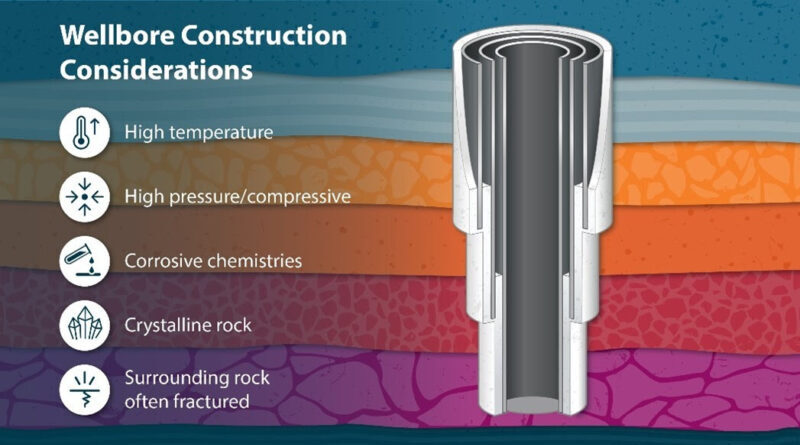[ad_1]

Sign up for daily news updates from CleanTechnica on email. Or follow us on Google News!
Funding will Support Six Projects to Help Bring Geothermal Power to Millions of U.S. Homes and Reduce Industrial Emissions
WASHINGTON, D.C. — Building on President Biden and Vice President Harris’s Investing in America agenda, the U.S. Department of Energy (DOE) today announced the selection of six projects that will receive up to $31 million to advance geothermal energy throughout the country. The projects will improve the construction of enhanced geothermal systems and demonstrate how reservoir thermal energy storage can reduce energy needs for industry — supporting DOE’s Enhanced Geothermal Shot™ goal to reduce the costs of enhanced geothermal systems (EGS) by 90% by 2035 and DOE’s Industrial Heat Shot™ goal to develop cost-competitive industrial heat decarbonization technologies with at least 85% lower emissions by 2035.
“Expanding the use of new and innovative geothermal technologies will allow the United States to continue pushing forward into the frontier of the clean energy revolution by using the heat beneath our feet,” said U.S. Secretary of Energy Jennifer M. Granholm. “These projects help achieve President Biden’s emissions reduction goals, strengthen U.S. competitiveness in this sector, and expand the types of clean and cost-effective energy solutions for American homes, businesses, and industry.”
Geothermal resources currently generate about four gigawatts of electricity in the United States, but a recent DOE analysis shows that advancing (EGS) could provide at least 90 gigawatts of firm, flexible power to the U.S. grid by 2050—enough to power the equivalent of more than 65 million U.S. homes. Geothermal resources for electricity production requires fluid to flow among hot rocks in the subsurface and then be drawn to the surface in the form of steam or hot water. While underground heat exists everywhere, many locations lack adequate water or conditions that facilitate fluid flow necessary to recover that heat energy. In those cases, EGS can be used to create a humanmade underground reservoir to tap that heat for energy. Using EGS to tap into geothermal resources requires drilling into the subsurface and using wells to draw hot water to the surface. Constructing and operating those wells can be costly. Improving methods to build those wells and assess their performance can reduce costs for EGS and other geothermal power generation technologies, helping make geothermal electricity a clean, cost-effective option.
As opposed to traditional energy storage batteries, which typically store electrical energy, reservoir thermal energy storage (RTES) technology can store thermal energy directly in underground reservoirs for 100 or more hours without the need for electricity. Several industries, including chemicals, food production, and forest products, consume most of their energy to generate heat used to transform materials into useful products—making RTES an important industrial solution. The RTES demonstration project will illustrate this technology’s capabilities to decarbonize the industry and help drive the nation towards a net-zero-emissions economy by 2050.
The selected projects are:
- Clemson University (Clemson, SC, $4,880,182): This project will develop an AI-enabled, photoacoustic imaging tool for high-temperature and high-pressure well logging to assess geothermal well integrity without active cooling.
- Innovative Downhole Solutions Inc. (Houston, TX, $2,509,545): This project will develop a durable ultrasonic measurement tool capable of operating for 24 hours in high-temperature geothermal environments to assess wellbore construction materials and practices.
- Lawrence Berkeley National Laboratory (Berkeley, CA, $2,016,000 ): This project will develop a tool for geothermal borehole integrity evaluation, designed to assess wellbore integrity in extreme conditions without the need for downhole electronics.
- Los Alamos National Laboratory (Los Alamos, NM, $3,674,955): This project will develop a high-resolution acoustics-based tool to provide high-fidelity data for evaluating EGS components under extreme conditions.
- Schlumberger Technology Corporation (Houston, TX, $10,000,000): This project will develop a wireline tractor-conveyed system for long-term integrity modeling of cement and casing.
- Project Development Solutions, Inc. (Bakersfield, CA, $7,899,807): This project will pilot a reservoir thermal energy storage (RTES) demonstration project at Kern Front Oil Field in Bakersfield, pairing subsurface geothermal reservoirs with a steam system and process heat off-taker.
These projects are funded by DOE’s Geothermal Technologies Office in the Office of Energy Efficiency and Renewable Energy.
Learn more about DOE’s EGS research and DOE’s low-temperature geothermal research, including RTES.
Selection for award negotiations is not a commitment by DOE to issue an award or provide funding. Before funding is issued, DOE and the applicants will undergo a negotiation process, and DOE may cancel negotiations and rescind the selection for any reason during that time.
Courtesy of U.S. Department of Energy.

Chip in a few dollars a month to help support independent cleantech coverage that helps to accelerate the cleantech revolution!
Have a tip for CleanTechnica? Want to advertise? Want to suggest a guest for our CleanTech Talk podcast? Contact us here.
Sign up for our daily newsletter for 15 new cleantech stories a day. Or sign up for our weekly one if daily is too frequent.
CleanTechnica uses affiliate links. See our policy here.
CleanTechnica’s Comment Policy
[ad_2]
Source link
